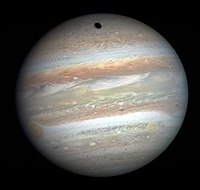
Photo from wikipedia
Abstract Fluids emanating from geothermal areas contain trace quantities of methane and other simple hydrocarbons. These hydrocarbons are thought to derive from thermal cracking of organic matter dissolved in circulating… Click to show full abstract
Abstract Fluids emanating from geothermal areas contain trace quantities of methane and other simple hydrocarbons. These hydrocarbons are thought to derive from thermal cracking of organic matter dissolved in circulating meteoric or seawater or found in pre-existing organic-rich sedimentary rocks, but an abiotic origin has also been proposed. We measured the relative abundances of four CH4 isotopologues (12CH4, 13CH4, 12CH3D, and 13CH3D) in hydrothermal gases discharged by steam vents and geothermal wells from Iceland and Nisyros island (Greece) in order to investigate the origin of methane. Measured methane samples yielded consistently low Δ13CH3D values (13CH3D abundance relative to stochastic) of 0.82–1.77‰, which correspond to high apparent temperatures of isotopologue equilibrium ( T Δ 13 CH 3 D = 278–490 °C). Hydrothermal well fluids from the Krafla and Namafjall geothermal fields in Iceland yielded the lowest Δ13CH3D values, and thus the highest Δ13CH3D-based temperatures averaging 438 - 45 + 55 °C. Those samples also show the most pronounced departures in δDCH4 and δ13CCH4 values expected for isotopic equilibrium with respect to δDH2O and δ13CCO2. In contrast, CH4 samples from natural steam vents in other Iceland locations and in Nisyros have slightly higher Δ13CH3D values (with T Δ 13 CH 3 D = 351 - 35 + 42 °C) and have δDCH4 and δ13CCH4 values that are consistent with those expected for isotopic equilibrium with both H2O and CO2. The short fluid residence times (1–50 years) in systems that are exploited for geothermal energy, such as Krafla and Namafjall, combined with the proximity of a hot magma chamber, favor the preservation of kinetic signals. The initial disequilibrium δDCH4 and δ13CCH4 values are consistent with a thermogenic origin from immature organics dissolved in hydrothermally heated groundwater, but an abiotic origin cannot be excluded. The high apparent Δ13CH3D-based temperatures at Krafla and Namafjall could therefore represent nonequilibrium signals associated with either pyrolysis or abiotic generation of CH4 in a superheated vapor or supercritical water phase (>374 °C), considered to exist in the roots of the system above the magmatic heat source. Isotopologue equilibration calculations demonstrate that under such conditions (e.g. > 400 °C) kinetic signals would be erased in days to months, implying rapid migration and quenching of CH4 into the overlying subcritical ( 100 years. Our calculations further reveal that CO2–CH4 isotopic equilibration requires unreasonably long fluid residence times, suggesting that any apparent 13C equilibrium may be coincidental.
Journal Title: Geochimica et Cosmochimica Acta
Year Published: 2021
Link to full text (if available)
Share on Social Media: Sign Up to like & get
recommendations!